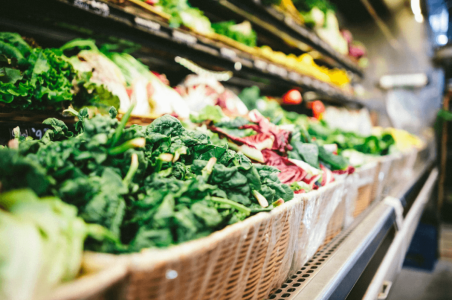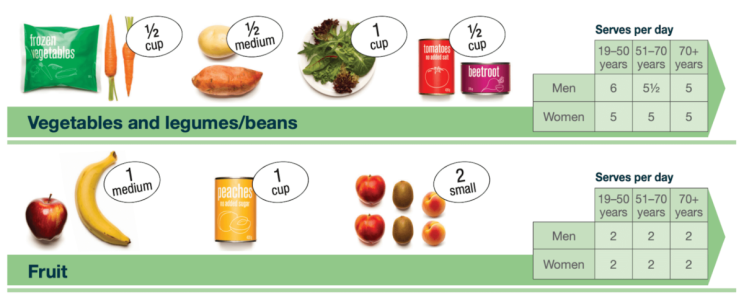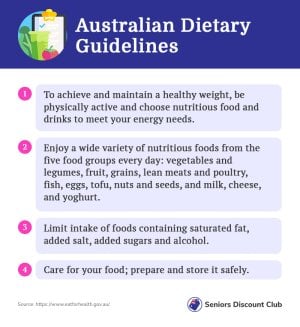Report reveals that Australians are not eating enough greens - why?
- Replies 6
Are you ready to hear an alarming truth about Australians' eating habits?
A recent report by Woolworths reveals that the majority of Australians are not getting enough of the nutrients they need to maintain a healthy lifestyle. Shockingly, one in every four Australians are eating only one serving of vegetables or less a day!
And that's not all. The report also exposes that shoppers are struggling to keep up with the rising grocery rates, and as a result, people are opting for more affordable but less nutritious options.
The research from Woolworths' digital wellness hub, HealthyLife, analysed over 900 million transactions, and only 34 per cent of shoppers were making healthy shopping choices.
And it's not just vegetables that Australians are falling short on; other food groups like grains, dairy, and meat are also seeing a reduced amount of serves consumed per day compared to the 2022 figures.
According to HealthyLife's Chief Health Officer, Simone Austin, Australians are not hitting the targets for the five core food groups when compared to national dietary guidelines.

What's causing this trend?
Experts point to the current cost of living crisis, which is causing consumers to shift away from fresh veggies. In difficult times, people tend to opt for cheaper, mass-produced processed foods rather than clean and healthy alternatives.
Professor Gary Mortimer from QUT Business School explains that this is a natural response to tough economic situations.
As budgets continue to tighten across the country, shoppers are even cutting back on snack foods. Recent figures show an 11 per cent decrease in purchases of sweets, sports drinks, and other snacks.
It's clear that Australians are feeling the pinch and are being forced to make difficult choices.
While the statistics on vegetable consumption are concerning, there is some good news.
Some shoppers are paying more attention to their eating habits and making healthier choices. Over 182,000 Aussies have already signed up for HealthyLife's free online food tracker tool, which helps shoppers determine the nutritional value of their shopping carts.
Experts are also encouraging shoppers to add more vegetables such as capsicums, cucumbers, beans, broccoli, and cauliflower to their diet, especially since prices have decreased significantly from last year's peak.

What are the Australian Dietary Guidelines?
The Australian Dietary Guidelines provide advice on the types and amounts of foods, food groups, and dietary patterns that aim to promote health and well-being, reduce the risk of diet-related conditions, and prevent chronic diseases.
The current Australian Dietary Guidelines were released in 2013 and included the following five guidelines:

A standard serving of vegetables is about 75g, or:
A standard serving of fruit is about 150g, or:
It's clear that Australians are facing a difficult challenge in maintaining a healthy diet during these trying times. However, the recent drop in prices of certain vegetables and the growing interest in healthy eating offer hope for a brighter future.
Members, do you find yourself struggling to maintain a healthy diet due to the current cost of living crisis? What steps have you taken to make healthier food choices? Are you aware of the nutritional value of the food you buy? Share your experiences with us in the comments!
A recent report by Woolworths reveals that the majority of Australians are not getting enough of the nutrients they need to maintain a healthy lifestyle. Shockingly, one in every four Australians are eating only one serving of vegetables or less a day!
And that's not all. The report also exposes that shoppers are struggling to keep up with the rising grocery rates, and as a result, people are opting for more affordable but less nutritious options.
The research from Woolworths' digital wellness hub, HealthyLife, analysed over 900 million transactions, and only 34 per cent of shoppers were making healthy shopping choices.
And it's not just vegetables that Australians are falling short on; other food groups like grains, dairy, and meat are also seeing a reduced amount of serves consumed per day compared to the 2022 figures.
According to HealthyLife's Chief Health Officer, Simone Austin, Australians are not hitting the targets for the five core food groups when compared to national dietary guidelines.

A recent report reveals that Australians are not eating enough vegetables due to rising grocery rates. Credit: Unsplash/Scott Warman.
What's causing this trend?
Experts point to the current cost of living crisis, which is causing consumers to shift away from fresh veggies. In difficult times, people tend to opt for cheaper, mass-produced processed foods rather than clean and healthy alternatives.
Professor Gary Mortimer from QUT Business School explains that this is a natural response to tough economic situations.
As budgets continue to tighten across the country, shoppers are even cutting back on snack foods. Recent figures show an 11 per cent decrease in purchases of sweets, sports drinks, and other snacks.
It's clear that Australians are feeling the pinch and are being forced to make difficult choices.
While the statistics on vegetable consumption are concerning, there is some good news.
Some shoppers are paying more attention to their eating habits and making healthier choices. Over 182,000 Aussies have already signed up for HealthyLife's free online food tracker tool, which helps shoppers determine the nutritional value of their shopping carts.
Experts are also encouraging shoppers to add more vegetables such as capsicums, cucumbers, beans, broccoli, and cauliflower to their diet, especially since prices have decreased significantly from last year's peak.
Key Takeaways
- Recent research shows that Australians are not consuming enough vegetables, with only one in every four people eating one serving of vegetables or less per day.
- Experts attribute this trend to the current cost of living crisis, which is causing shoppers to shift towards cheaper, processed foods.
What are the Australian Dietary Guidelines?
The Australian Dietary Guidelines provide advice on the types and amounts of foods, food groups, and dietary patterns that aim to promote health and well-being, reduce the risk of diet-related conditions, and prevent chronic diseases.
The current Australian Dietary Guidelines were released in 2013 and included the following five guidelines:
- To achieve and maintain a healthy weight, be physically active and choose amounts of nutritious food and drinks to meet your energy needs.
- Enjoy a wide variety of nutritious foods from the five food groups every day:
- vegetables and legumes,
- fruit,
- grains,
- lean meats and poultry, fish, eggs, tofu, nuts and seeds,
- and milk, cheese, and yoghurt. - Limit intake of foods containing saturated fat, added salt, added sugars and alcohol.
- Encourage, support and promote breastfeeding.
- Care for your food; prepare and store it safely.

It's helpful to get to know the recommended serving sizes and serves per day so that you eat and drink the right amount of the nutritious foods you need for health. Credit: Eatforhealth.gov.au.
A standard serving of vegetables is about 75g, or:
- ½ cup cooked green or orange vegetables (for example, broccoli, spinach, carrots or pumpkin)
- ½ cup cooked, dried or canned beans, peas or lentils (preferably with no added salt)
- 1 cup green leafy or raw salad vegetables
- ½ cup sweet corn
- ½ medium potato or other starchy vegetables (sweet potato, taro or cassava)
- 1 medium tomato
A standard serving of fruit is about 150g, or:
- 1 medium apple, banana, orange or pear
- 2 small apricots, kiwi fruits or plums
- 1 cup diced or canned fruit (with no added sugar)
It's clear that Australians are facing a difficult challenge in maintaining a healthy diet during these trying times. However, the recent drop in prices of certain vegetables and the growing interest in healthy eating offer hope for a brighter future.
Members, do you find yourself struggling to maintain a healthy diet due to the current cost of living crisis? What steps have you taken to make healthier food choices? Are you aware of the nutritional value of the food you buy? Share your experiences with us in the comments!








